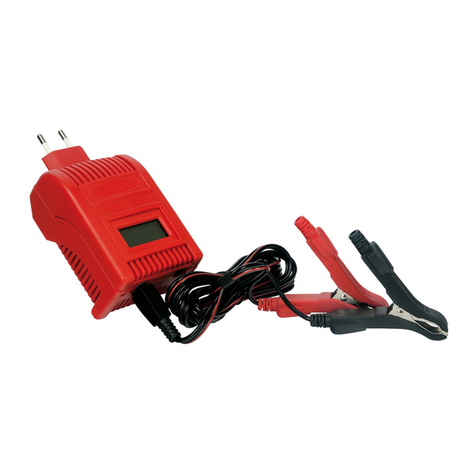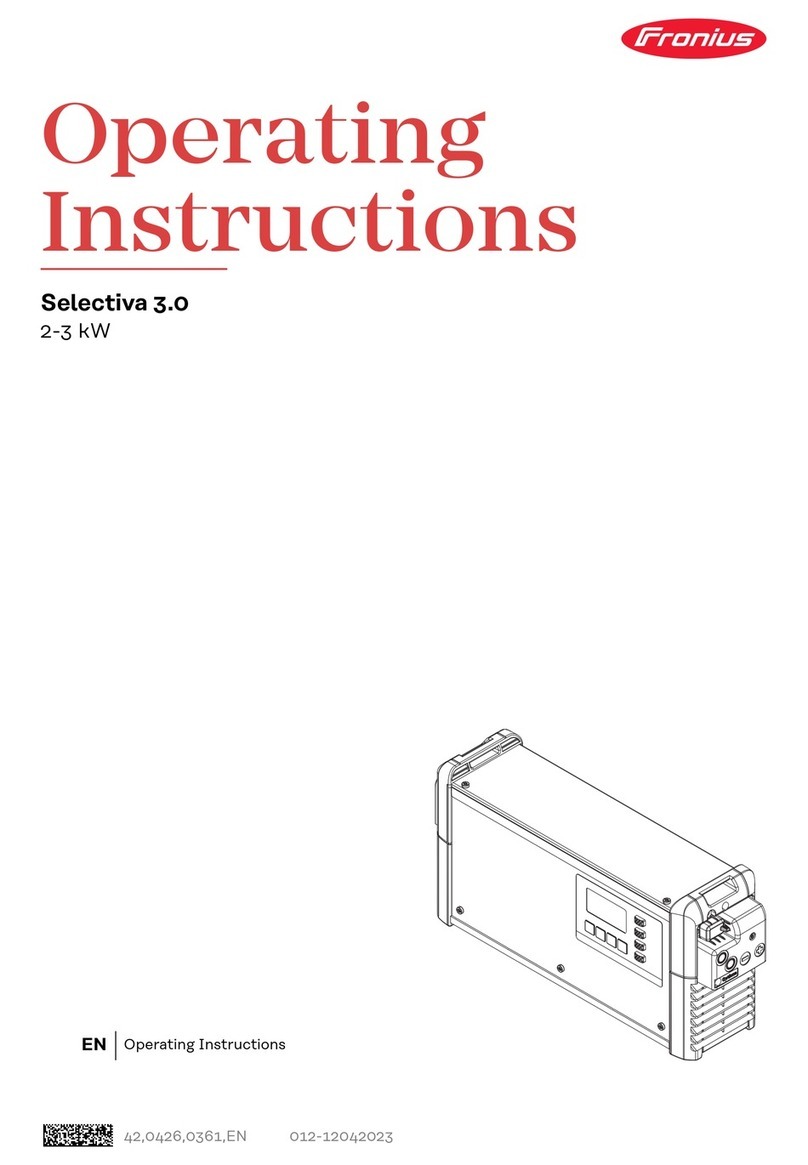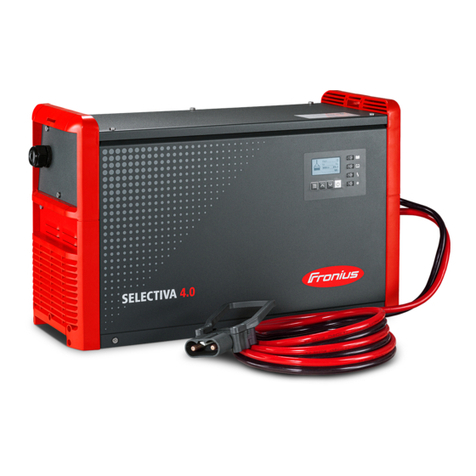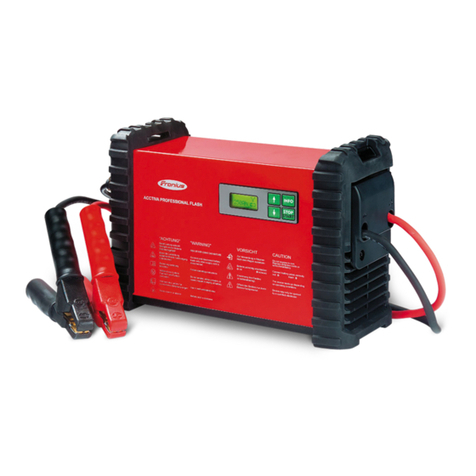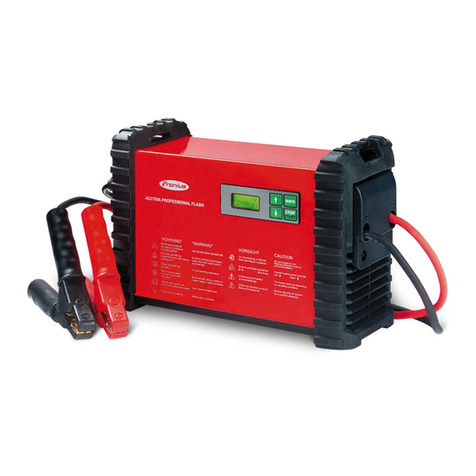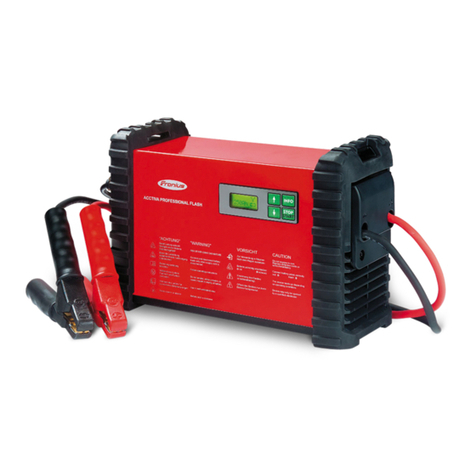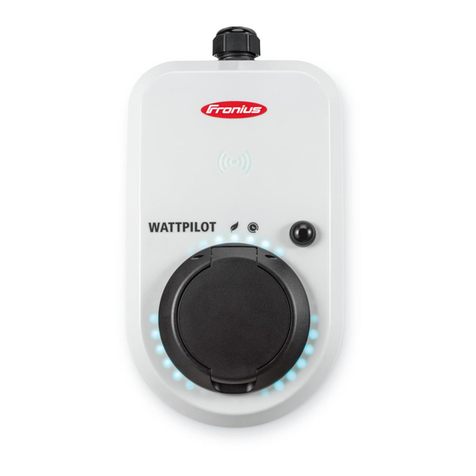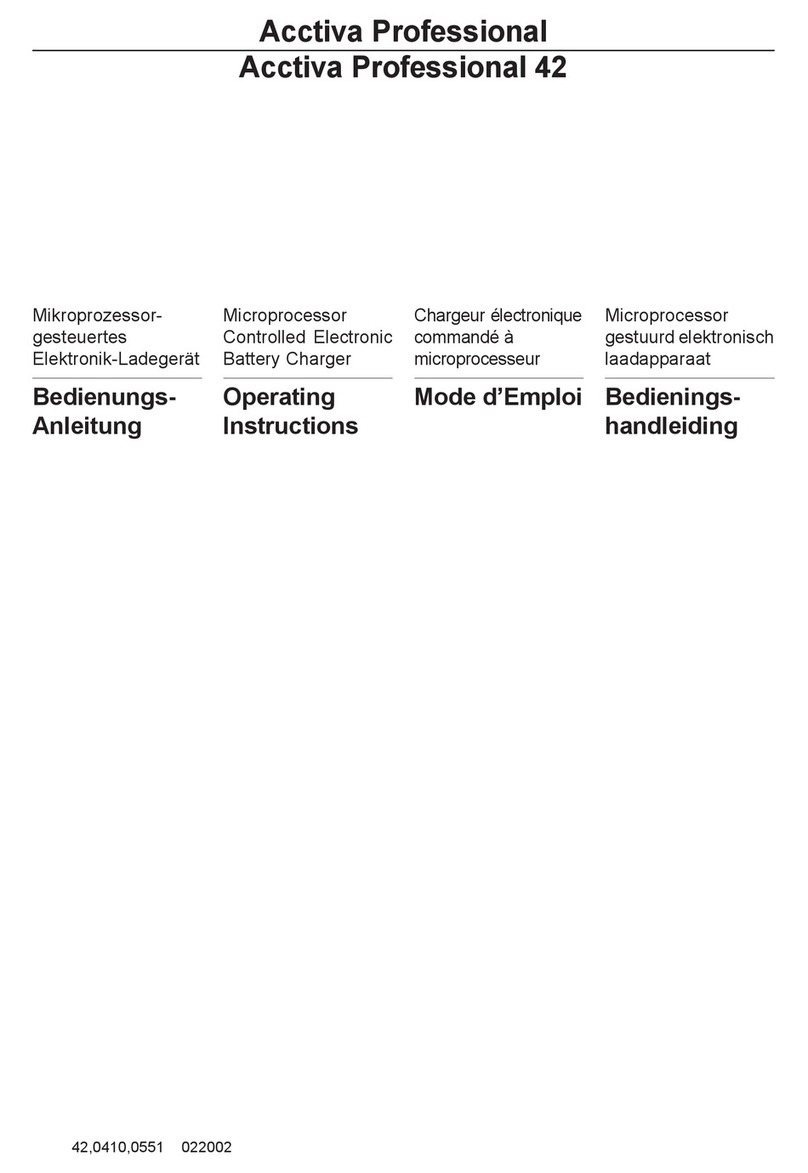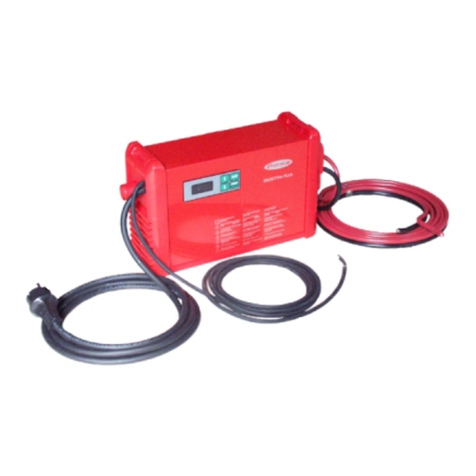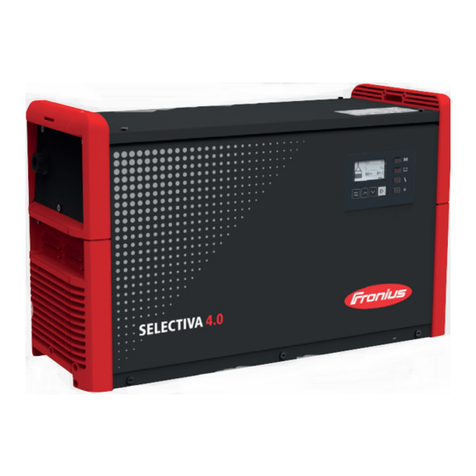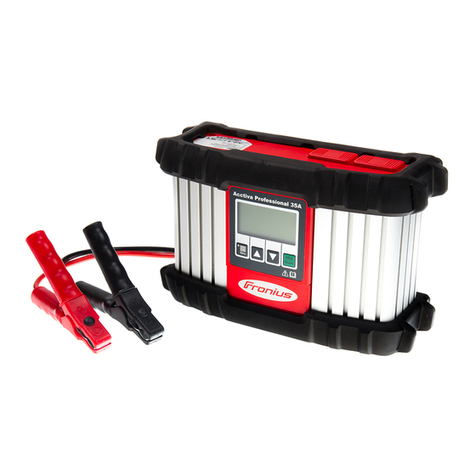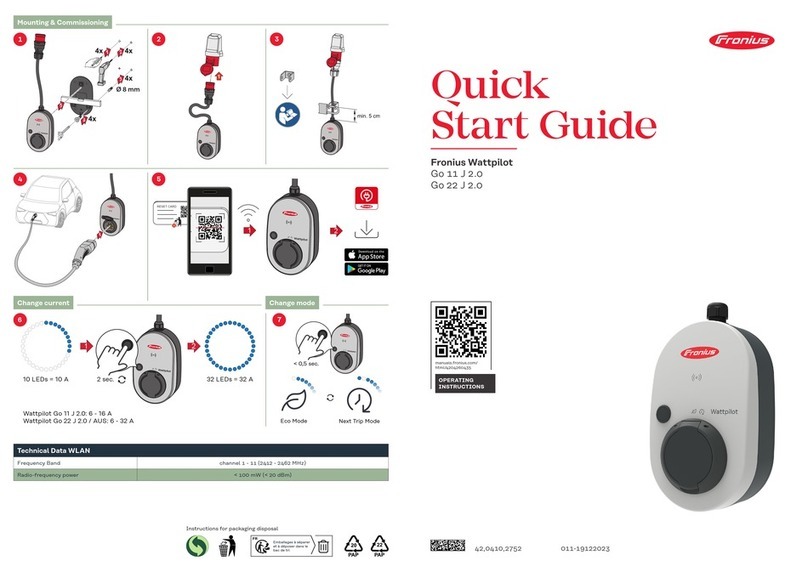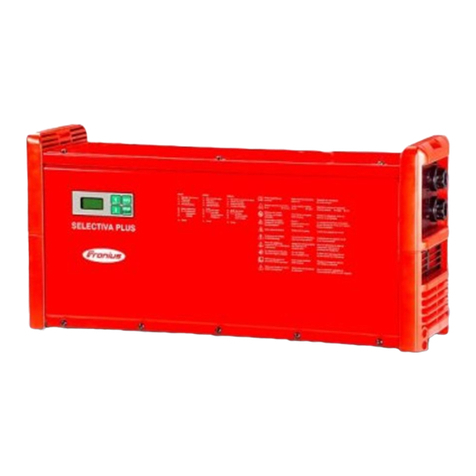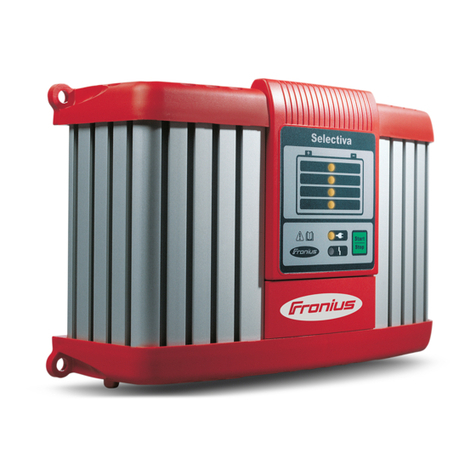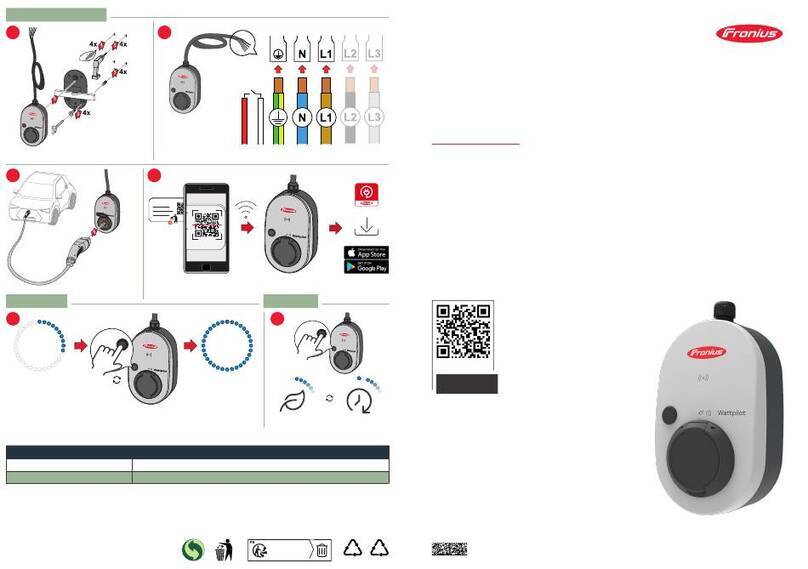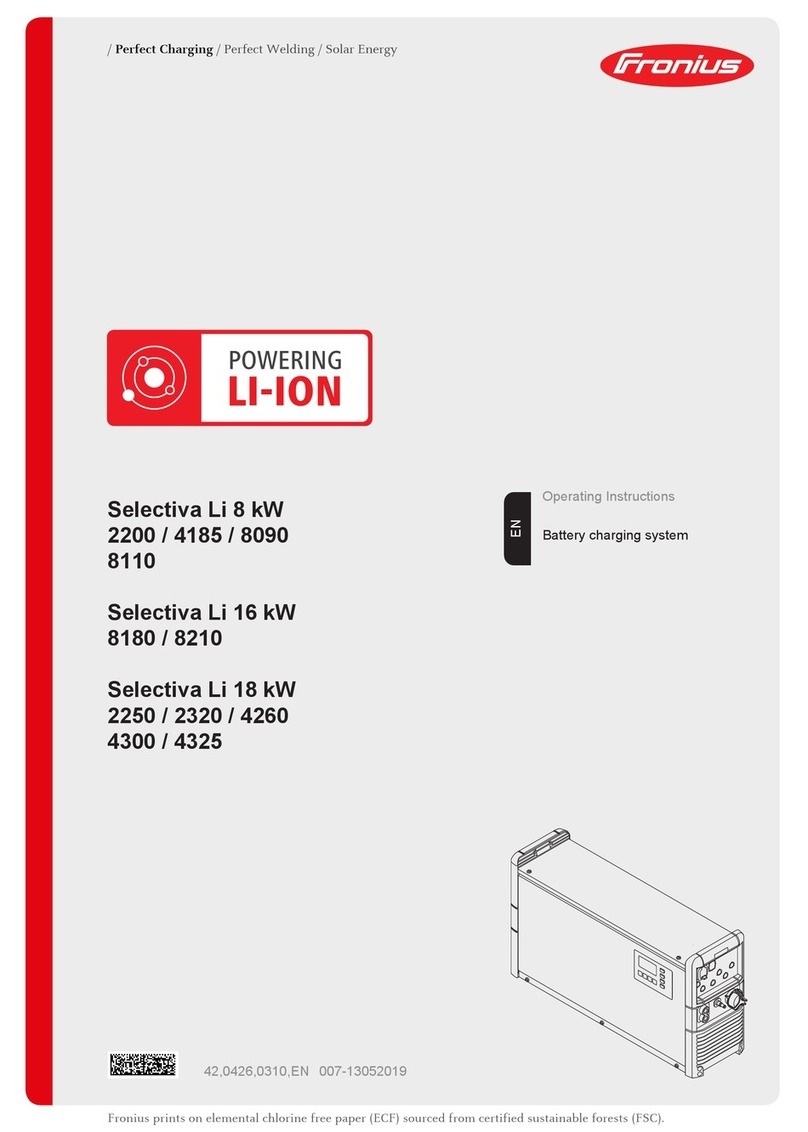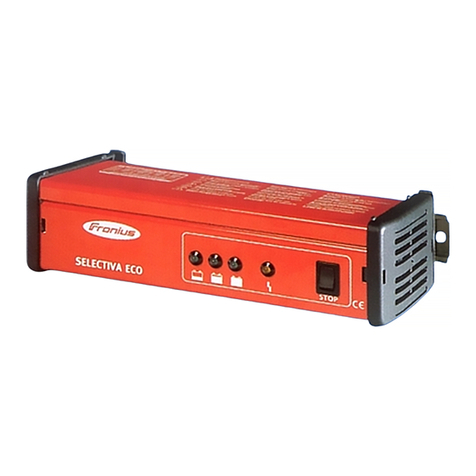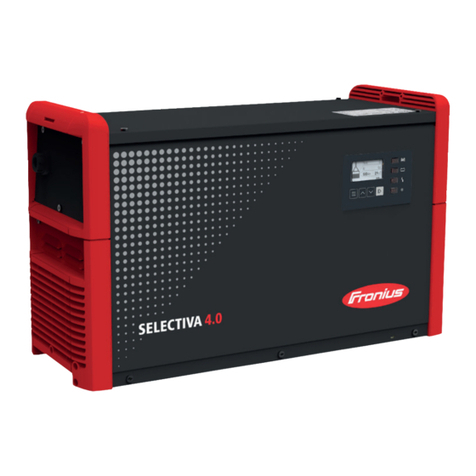
III ud_fr_ls_sv_00910 012005
Selbst und
Personenschutz
Personen, vor allem Kinder, während des Betriebes vom Gerät und vom
Arbeitsbereich fernhalten. Befinden sich dennoch Personen in der Nähe
- diese über alle Gefahren (gesundheitsschädliche Säuren und Gase,
Gefährdung durch Netz- und Ladestrom, ...) unterrichten,
- geeignete Schutzmittel zur Verfügung stellen.
Vor Verlassen des Arbeitsbereiches sicherstellen, dass auch in Abwesenheit
keine Personen- oder Sachschäden auftreten können.
Es liegt im Verantwortungsbereich des Betreibers, dafür Sorge zu tragen,
dass keine elektromagnetischen Störungen an elektrischen und elektroni-
schen Einrichtungen auftreten.
EMV und EMF
Maßnahmen
- Geräte mit Schutzleiter nur an einem Netz mit Schutzleiter und einer
Steckdose mit Schutzleiter-Kontakt betreiben. Wird das Gerät an einem
Netz ohne Schutzleiter oder an einer Steckdose ohne Schutzleiterkontakt
betrieben, gilt dies als grob fahrlässig. ür hieraus entstandene Schäden
haftet der Hersteller nicht.
- Das Gerät nur gemäß der am Leistungsschild angegebenen Schutzart
betreiben.
- Das Gerät keinesfalls in Betrieb nehmen, wenn es Beschädigungen
aufweist.
- Sicherstellen, dass die Kühlluft ungehindert durch die Luftschlitze am
Gerät ein- und austreten kann.
- Netz- und Gerätezuleitung regelmäßig von einer Elektro- achkraft auf
unktionstüchtigkeit des Schutzleiters überprüfen lassen.
- Nicht voll funktionstüchtige Sicherheitseinrichtungen und Bauteile in nicht
einwandfreiem Zustand vor dem Einschalten des Gerätes von einem
autorisierten achbetrieb instandsetzen lassen.
- Schutzeinrichtungen niemals umgehen oder außer Betrieb setzen.
Sicherheitsmaß
nahmen im
Normalbetrieb
Allgemeine
Hinweise zum
Umgang mit
Batterien
- Batterien vor Schmutz und mechanischer Beschädigung schützen.
- Aufgeladene Batterien in kühlen Räumen lagern. Bei ca. +2° C (35.6° )
besteht die geringste Selbstentladung.
- Durch wöchentliche Sichtprüfung sicherstellen, dass Batterie bis zur max.
Markierung mit Säure (Elektrolyt) gefüllt ist.
- Betrieb des Gerätes nicht starten bzw. sofort stoppen und Batterie von
autorisierter achwerkstätte überprüfen lassen bei:
- ungleichmäßigem Säurestand bzw. hohen Wasserverbrauch in einzel-
nen Zellen hervorgerufen durch einen möglichen Defekt.
- unzulässiger Erwärmung der Batterie über 55° C (131° ).
ür die Datensicherung von Änderungen gegenüber den Werkseinstellungen
ist der Anwender verantwortlich. Im alle gelöschter persönlicher Einstellun-
gen haftet der Hersteller nicht.
Datensicherheit
